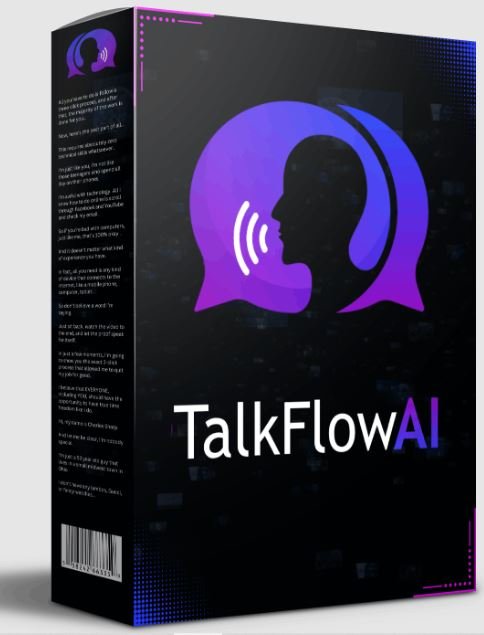Chatbot Customer Service

Table of Contents
In today’s fast-paced world, businesses are under pressure to deliver fast, efficient, and personalized customer support. Enter chatbot customer service—an AI-powered solution that can handle customer queries, improve response times, and boost customer satisfaction. With chatbots, businesses can streamline operations, reduce costs, and offer 24/7 service without sacrificing quality. In this article, we’ll explore how you can integrate chatbot customer service into your strategy and why it’s a game-changer for your business.
What is Chatbot Customer Service?
Before diving into the benefits and implementation of chatbot customer service, it’s important to define what exactly it entails. A chatbot is an AI tool designed to simulate human conversation. When integrated into your customer service system, it can respond to inquiries, solve problems, and even process transactions—all in real-time. Chatbots can be deployed on websites, social media platforms, and mobile apps, ensuring that your customers always have access to the support they need, whenever they need it.
5 Easy Ways to Implement Chatbot Customer Service
Implementing chatbot customer service can seem daunting at first, but it’s easier than you think! Here are five actionable steps to get started:
1. Identify Common Customer Queries
The first step to successful chatbot implementation is identifying the most common questions or issues your customers face. Whether it’s order tracking, product inquiries, or account support, understanding your customer needs will allow you to configure your chatbot for maximum efficiency.
2. Choose the Right Chatbot Platform
Not all chatbots are created equal. Choose a platform that fits your business’s specific needs, from simple rule-based bots to more complex AI-driven systems. one of the popular options is TalkFlow AI.
3. Integrate with Your Existing Systems
A chatbot is only as effective as the systems it can interact with. Ensure that your chatbot customer service is connected to your CRM, order management system, and other tools you use to interact with customers. This will allow it to deliver personalized and accurate responses.
4. Design a Conversational Flow
Effective chatbots need a clear conversational flow. Think about how a customer might ask a question and how the chatbot should respond. It’s important to create multiple paths that can guide customers to the right information or action. Remember, users should never feel “stuck” in a conversation!
5. Monitor and Optimize Performance
Once your chatbot is live, monitoring its performance is crucial. Regularly review chat logs and customer feedback to identify areas for improvement. Analytics tools can help you track response times, customer satisfaction, and resolution rates, allowing you to optimize your chatbot continuously.
How Chatbot Customer Service Benefits Your Business
Chatbot customer service offers a range of benefits for businesses looking to improve their customer support operations. Let’s take a look at some of the most significant advantages:
1. 24/7 Availability
One of the primary benefits of chatbot customer service is its ability to offer round-the-clock support. Unlike human agents, chatbots don’t need breaks, making them ideal for businesses that operate in multiple time zones or require constant availability.
2. Faster Response Times
Customers today expect quick responses. Chatbots can provide near-instant answers to customer queries, reducing wait times and enhancing the overall customer experience. Fast responses also increase the likelihood of customer retention.
3. Cost Efficiency
Hiring, training, and maintaining a team of customer service agents can be expensive. With chatbot customer service, you can automate many routine tasks, freeing up human agents to focus on more complex issues. This helps reduce overhead costs while still providing top-notch service.
4. Scalability
As your business grows, so does the demand for customer support. A chatbot can easily scale to handle an increased volume of queries without requiring additional resources. This makes it a cost-effective solution for businesses experiencing rapid growth.
5. Personalization
Advanced chatbots are capable of personalizing interactions with customers based on their previous interactions or data from your CRM system. This enables the chatbot to provide more relevant and tailored responses, which can significantly improve customer satisfaction.
How to Create Chatbot Customer Service for Your Business
Creating a chatbot for customer service involves several key steps. Here’s a simplified guide on how to develop your own chatbot customer service strategy:
1. Define Your Goals
Before you start building a chatbot, it’s essential to define what you hope to achieve. Are you looking to answer frequently asked questions, process orders, or offer technical support? Knowing your objectives will help you design a chatbot that meets your business needs.
2. Choose the Right Type of Chatbot
There are different types of chatbots depending on their complexity:
- Rule-based Chatbots: These follow a set of predefined rules and are typically used for answering basic questions or guiding users through simple processes.
- AI-powered Chatbots: These use machine learning to understand and respond to a wider range of inquiries, offering more natural and dynamic conversations.
3. Design the User Experience
A good chatbot provides an intuitive user experience (UX). Ensure that your chatbot has a clear, friendly tone and that its conversational flow is smooth. Avoid overloading users with too many options and keep responses concise and actionable.
4. Train Your Chatbot
Training your chatbot involves feeding it with examples of conversations, frequently asked questions, and relevant responses. The more data you provide, the better the chatbot will perform. For AI-powered bots, this step may involve machine learning algorithms to improve their ability to understand and respond to customer queries.
5. Test and Launch
Before launching your chatbot, test it extensively to ensure that it can handle a variety of customer scenarios. This will help identify potential issues and refine the user experience. Once it’s ready, launch your chatbot customer service and continuously monitor its performance.
Best Practices for Chatbot Customer Service
To make the most of your chatbot customer service strategy, it’s important to follow best practices that can ensure its success:
1. Offer Escalation to Human Agents
While chatbots are great at handling simple tasks, there are times when a customer may need to speak with a human agent. Make sure your chatbot has a smooth handoff process to escalate complex issues to a live agent.
2. Keep Conversations Short and Simple
Customers don’t have time for long-winded conversations. Train your chatbot to provide concise, direct answers that get to the point. If necessary, provide options that allow users to quickly navigate to their desired outcome.
3. Ensure Security and Privacy
Security is a top concern for customers when interacting with online services. Make sure your chatbot complies with relevant regulations (such as GDPR) and has proper encryption to protect customer data.
4. Use Analytics to Continuously Improve
After your chatbot is live, use analytics to track key metrics like response time, customer satisfaction, and resolution rates. Regularly update your chatbot’s knowledge base and conversational flow based on this data to ensure optimal performance.
Conclusion: My Final Suggestion For Chatbot Customer Service
Introducing TalkFlow, the world’s first conversational AI that speaks and responds like a real human! As your personal assistant, TalkFlow streamlines any business task effortlessly. With no skills required and seamless integration, it guarantees high EPCs and high conversions. This cutting-edge AI offers real-time voice interaction, emotion recognition, and dynamic task handling, making it the ultimate solution for businesses looking to boost productivity and enhance customer satisfaction.
In today’s digital era, chatbot customer service is no longer optional—it’s essential for staying competitive. TalkFlow transforms your customer interactions by offering 24/7 support, faster response times, and reducing operational costs. Whether you’re a startup or a large enterprise, integrating TalkFlow into your customer service strategy will unlock a more efficient, cost-effective, and personalized service experience.
Start small, test, and scale your chatbot customer service to meet your customers’ evolving needs. Don’t miss out on the future of AI—launch your platform today and take your business to new heights! know more ….


